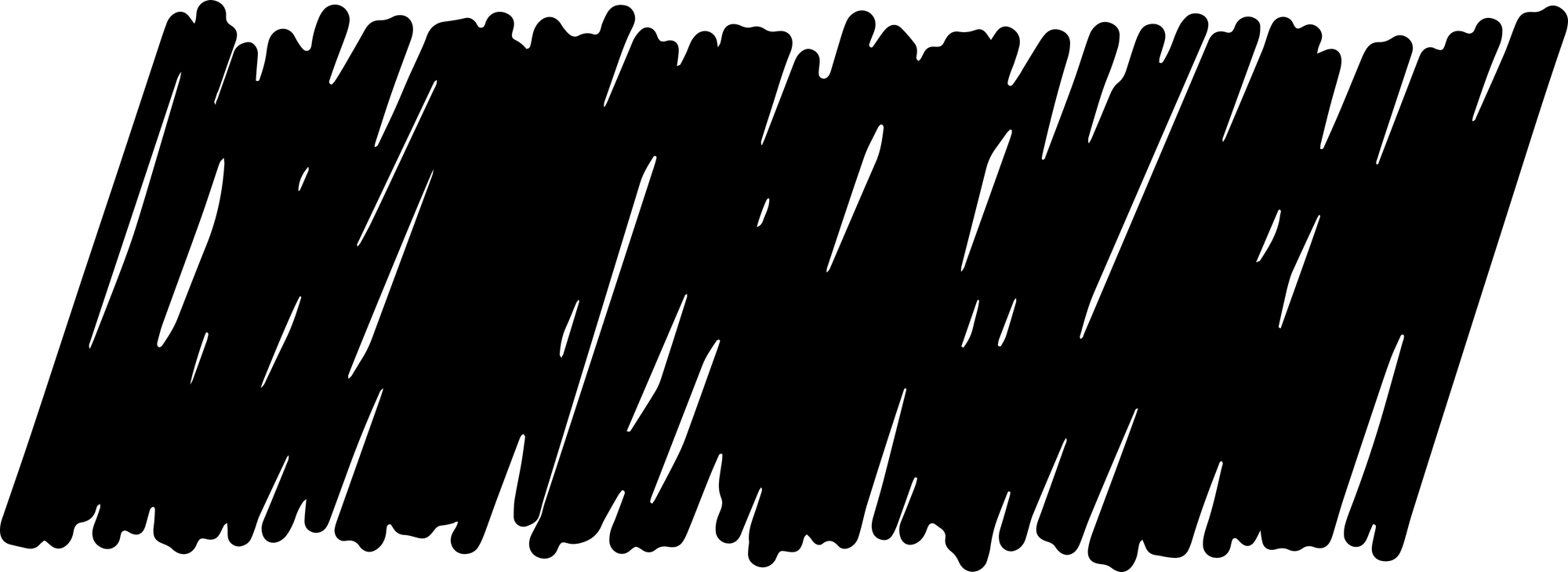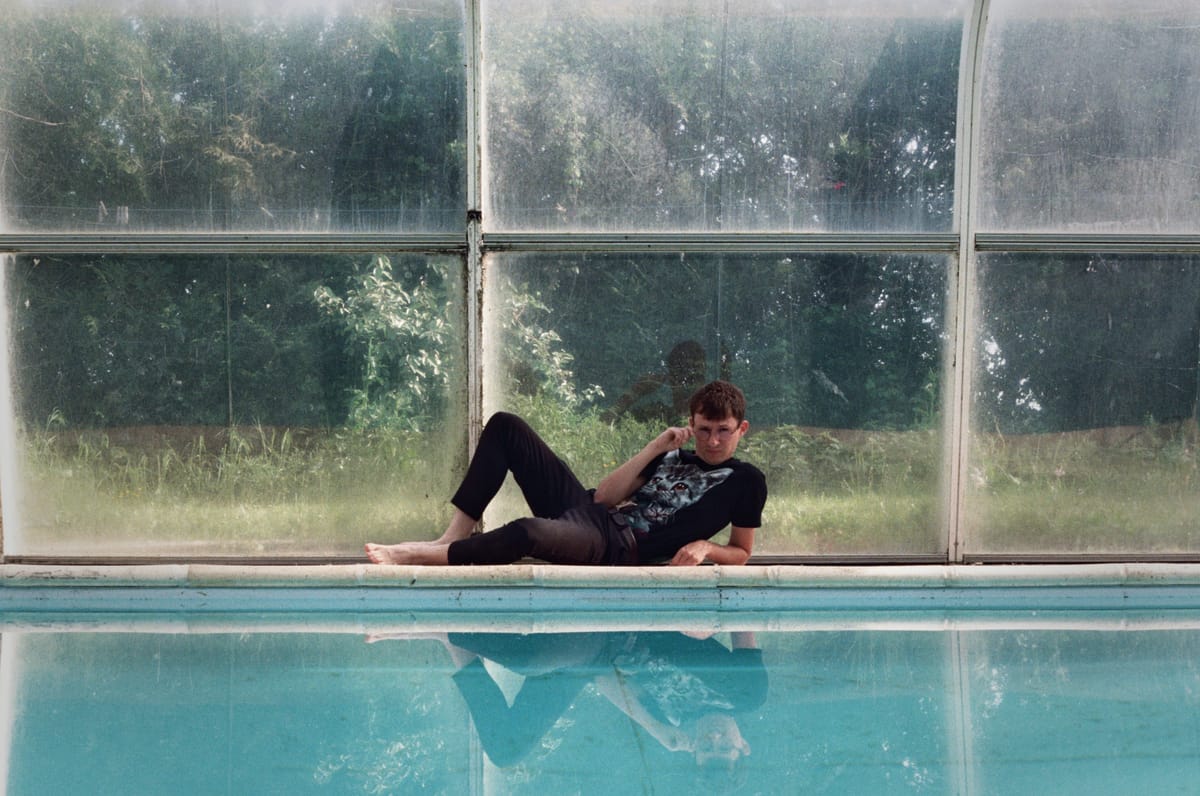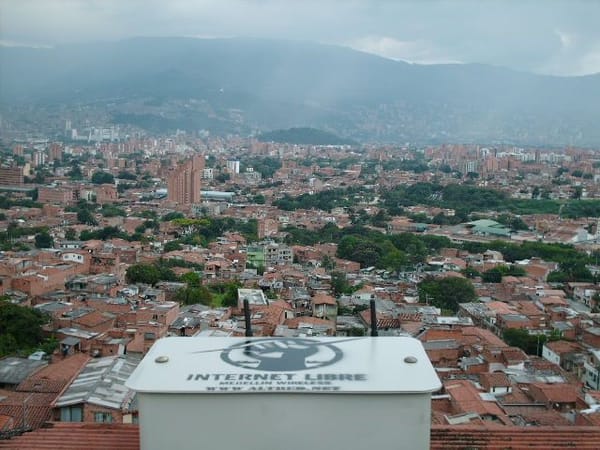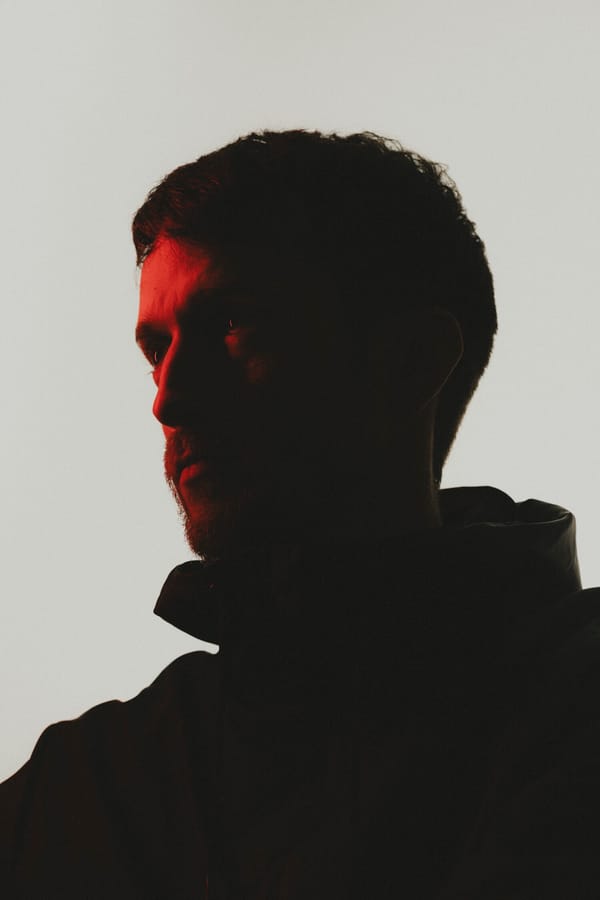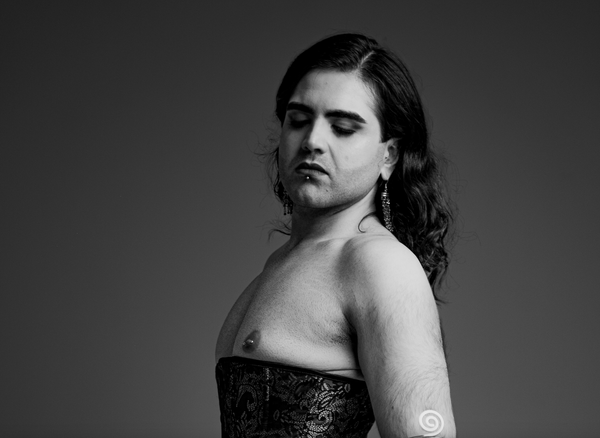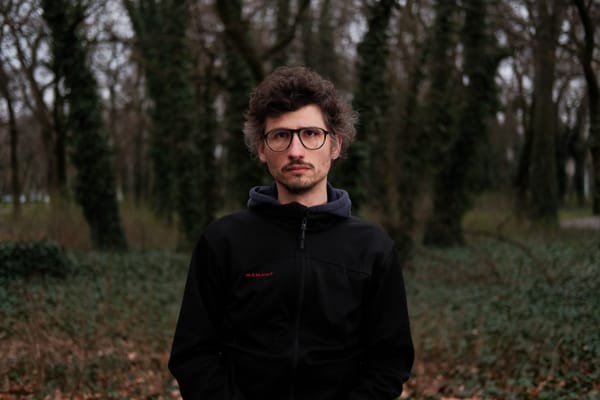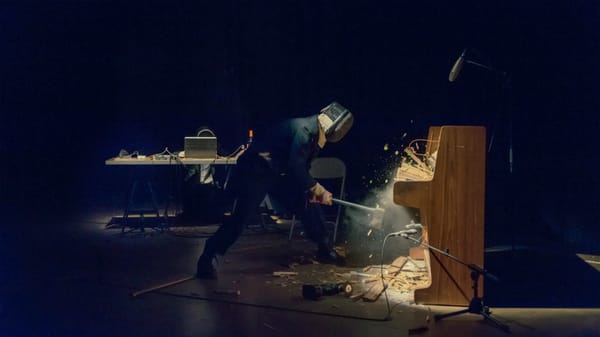Register for free to receive our newsletter, and upgrade if you want to support our work.
Christian Coiffure appeared on my radar sometime in 2020. My memories are a bit foggy on exactly how, but if I had to guess, the first encounter was probably via the massive tribute/charity compilation of Metaphore Collectif. The release was put together in order to save their headquarters in Marseille, META, from closing down due to financial struggles caused by COVID-19. As to my knowledge, META reopened and is doing well, while Lucas Marciniak aka C. Coiffure keeps making some of the most mind-blowing music, with his second album now released in the curation of the French Comic Sans Records.
Coiffure started off with two heavy-hitting EPs, the first being Un Nouvel Âge Réminiscent (Worst Records, 2019), a comprehensive 5+1 track introduction, inspired by genres like EBM, trance, and dubstep, occasionally featuring some industrial twists. This first release probably marks the most club-oriented and “danceable” sound produced by Coiffure to this day. Following up in 2020, his second EP titled A Left Undone was released on Comic Sans Records, showcasing a new bass-heavy style rooted in UK club culture.
His first album, Freefloat is a beautifully crafted ambient-IDM journey released on Worst Records in 2021. For a lot of artists (some making exclusively club music beforehand), being stuck at home for months on end, this period seemed to be a time for slowing down and experimenting. This is what seemingly happened to Coiffure as well. As he says in an interview preceding the release of his first album:
These days I’m definitely into pieces that will focus and work on the sound, mainly experimental stuff. And of course it deals with moods & emotions. Experimental and ambient music fits well in these isolated days because I have time for introspection and deep listening.
Now, on his second full-length album, Lookbook 2021-2023, he circles back to a faster and heavier sound, supplying some bangers for the dancefloors while seducing the bedroom listeners with some atmospheric tunes. Coiffure really does some genre-bending black magic on this one, just look at how many words it took for the label to convey at least to a certain extent what is happening:
Rooted in dub aesthetics, “Lookbook 2021 – 2023” artfully weaves together sonic elements from minimalistic IDM, dubstep, abstract techno, and trancy tech-house, drawing inspiration from Coiffure’s UK and aussie club music influences, intertwined with his appetite for experimental and deep electronic music.
Given our scene’s over-analyzing genre-fetishism, it is just really beautiful when one is unable to put a somewhat reliable definition of a style into their Bandcamp tags. Whatever it is, Coiffure’s album is a great piece of music, and his releases are always a surprise. After such a lengthy warmup, I present to you his thoughts about some of his work and a bit of insight into his music discovery and producing process.
You’ve released stuff on some of the most hilariously named labels of electronic music history. How did your collaboration and friendship start with Comic Sans and Worst Records?
Lucas Marciniak aka Christian Coiffure: Yes, my friends who founded these labels and I share a common taste for silly jokes and puns. I met Quentin & Anthony from Comic Sans at the beginning of my journey in electronic music when they were building an online & IRL community of aficionados called La Chinerie whose purpose was mostly to share tracks affiliated with a certain genre of music. We met a few times in Lyon during meetings of this community and then started going out in clubs together. I guess I gained their trust when I started making Mickael Jackson adlib impersonations in clubs while dancing. I was already producing music at the time under another alias, and I started sending them demos. It took some time, but they always made me push my tracks further to try to make them more professional.
Regarding Positive Education’s Worst Records, we had some friends in common and started hanging out with them around 2018. After a festival during that summer, I got super inspired and produced a track in like 2 or 3 days that I sent to Antoine & Charles, cofounders of the festival, who had the label almost ready to launch at that time. They asked me for a few more tracks which became my first record under the alias Christian Coiffure.
Freefloat was very much a concept album. This new release, as the title also suggests, seems more like a collection of your latest works sewn together by a hard-to-define style and genre. Why did you decide to take this route and how did you approach working on this release compared to Freefloat?
Freefloat was made with a very peculiar and different working approach since I was tired of starting a lot of projects and not being confident enough to finish them or couldn’t decide at what point I could consider a track finished. So, I decided to pause everything and make an ambient album in the timespan of one month. I was planning to release it on my own Bandcamp, but the guys from Worst got interested and decided to launch their sublabel by releasing it.
Then, after the release of the Freefloat Remixes, I was mostly working on some drafts and sound design. I hadn’t any plan for a release, but I knew I wanted to do something clubbier. I had this weird feeling that maybe people labeled me as an exclusive experimental/weirdo/ambient music player, so I wanted to get out of that. One of my main considerations with this project was to avoid being labeled within a particular vibe or style, but it’s super hard. The release was supposed to be a 4-tracker with like 2 club-friendly tracks and 2 more introspective ones. At a point where I started to doubt some of them, I started to listen back to projects I’ve worked on earlier and I felt some of them could be included in the release. So, I pushed it a bit further, to give an overview of some of the sounds I’ve been into during the making of this release.
I also think the mindset regarding inspiration was different between the two releases. When I started producing Freefloat tracks, I tried to avoid any musical inspiration as much as I could to prevent a reproduction bias, and to focus on my creativity. Whereas for some tracks in the Lookbook, I really knew what kind of sound I wanted to make, so I listened to a lot of music and gave a try to blend some ideas gathered from the tracks I liked the most.
All of your releases touch on a bit of a different sound, though none of them are restrictive of one genre. Is this album also the end of an era for you? Do you already know what style is going to follow?
Sometimes I feel like the music I release may be too close to the music I got inspired from. I want to be detached from this, trying to have a more distinctive sonic identity, and as time goes on, I feel like I know what kind of music I want to make. But it’s in perpetual motion so the future will tell. I like swimming between genres and release tracks whose attributes relate to a peculiar genre but through my prism.
With this release, I managed to release both club-friendly tracks, and music more suitable for listening, introspection, etc. I want to keep exploring that and go deeper into my sound. So, I’ll keep exploring the aesthetics of contemporary bassy club music and some dub and techno sub-genres and try to find bridges between them. I tend to listen to more “colorful” club music these days, and I love house, street soul, and RnB music, so I might wanna give a go with these as well, at least for the fun.
They say you’re a Bandcamp-connoisseur. How do the real depths of Bandcamp look? What advice would you have for beginner diggers in the digital age?
I like how Bandcamp is conceived because it’s not algorithm-based like Soundcloud or Youtube, and you have a lot of different ways to access music you don’t know. It’s also different from Discogs, because it’s not built like a database where you can go through artists and labels and lists and get lost quickly with 20 tabs opened in your browser. The only way to access music from labels and artists you don’t follow on Bandcamp is through other people’s collections, tags, or getting to know them from other sources. I combine those three, of course, but I also like to use the features from the media aspect of Bandcamp, like the Bandcamp Daily and their charts. I usually find their articles super well written, and I’ve learned many things about genres and artists I like by reading them. There’s also a board on their main page where you can see what music just got bought on the platform. I like to randomly open some of those and give them a listen.
So, my main advice would be to first search for your favorite releases, check the affiliated tags – you can combine them in the tags window, which is super cool – and then browse a few people’s collections, until you find an artist or a label you like.
Can you give a bit of insight into your producer toolset and process?
Tough one! Well, I have a bit of hardware, but I use mostly Ableton and plug-ins. Regarding hardware, I like having pieces that can’t be emulated by a plug-in. I own an Analogue Solutions Nyborg 12, a small modular rig, a SOMA Cosmos, a bunch of small percussions, and some microphones. Plug-ins of instruments and effects are usually full of presets so from time to time I prefer using my gear, which for most of it, doesn’t include preset storage. I like tweaking stuff, it’s more spontaneous and it makes it easy to have happy accidents. That’s a thing I’m really looking forward to when messing around with sound. For the plug-ins, I usually go with instruments made for complex sound design: Arturia Pigments, Massive X, or Kilohertz Phase Plant. They’re all super powerful and each has some qualities and features that the others don’t. I also love Max for Live devices, there are super dope developers out there and a lot of these instruments are insanely creative tools.
The process of making the track depends on the idea I have in mind, if it’s a beat, then I’ll go first with that, if it’s a synth sound, I’ll open a blank template on one of the synths plugins mentioned before, and start to sculpt my sound, or go through presets or my recorded jams, etc. Then I tend to find all my main elements until I have the core of the track, and then go for a basic arrangement. From there, I will record modulations and automations on the whole length of the track or use the hardware to record stuff. After that, it will be mostly back and forth between the label and me to improve arrangement, editing, and mixing, until we’re both satisfied. One thing I tend to do is separate the sound-design, creative & mixing/editing sessions, as they require a different mindset and it’s easier to keep things organized.
If you were a hairstyle, what would you be?
Nicolas Cage’s one from Con Air, pure 90s style, or any Björk hairstyle.
Cover photo: Louise Collignon
